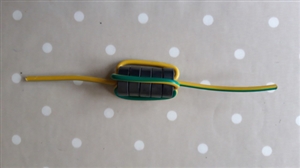A frfiend of mine did some earth bonding a few years ago and he was told on inspection that you were allowed to count copper pipes as an earth connection as long as the joints were soldered or compression fittings.
If that is still the case, could I bond my earth rod to an outdoor central heating drain tap just two metres away?


We're about to take you to the IET registration website. Don't worry though, you'll be sent straight back to the community after completing the registration.
Continue to the IET registration site